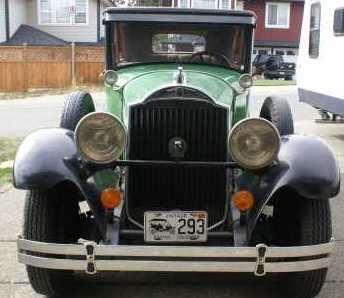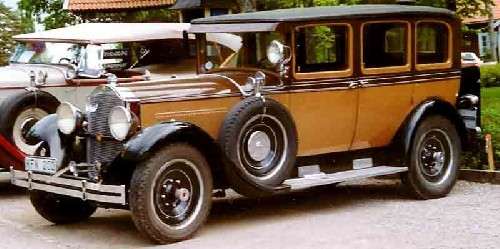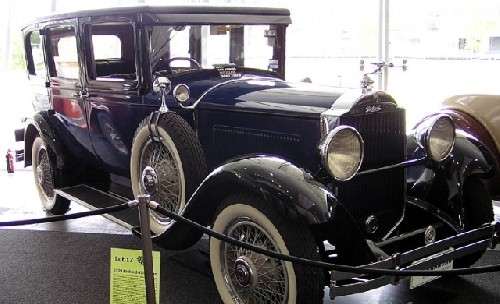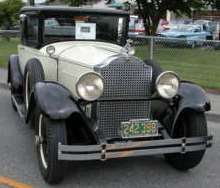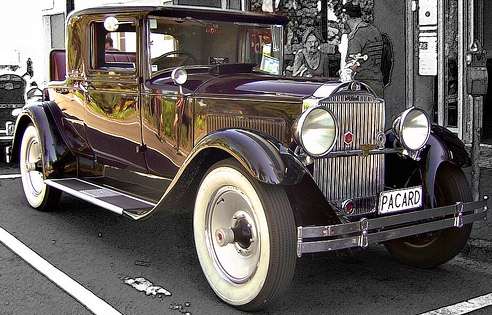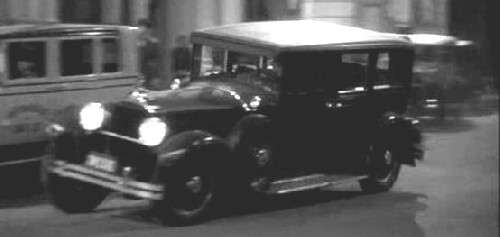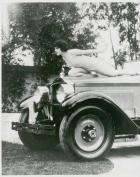|
Re: 1929 packard 626 fuel tank
|
||||
|---|---|---|---|---|
|
Home away from home
|
Tom,
I've had a few tanks done at: They did good work. gastankrenu.com/ gastankrenu.com/how.htm Regards, Dave Their Guarantee, from their site: GUARANTEED RESULTS Our unique, chemical bonding repair process gives your fuel tank a tough, "double layer" of protection. Gas Tank Renu - USA coats both the inside and outside of your tank, sealing it from rust and corrosion. We are so sure of our patented process, that we offer a limited LIFETIME NATIONWIDE WARRANTY on every passenger car or light truck tank repaired and two years on all other tanks. Our guarantee is honored at any Gas Tank Renu - USA Dealership. Gas Tank Renu - USA's repair process is completely compatible with gasoline, water (non-drinking), diesel, methanol and ethanol.
Posted on: 2011/1/2 16:05
|
|||
|
||||
|
Re: 7th - 8th - 9th Series - New - Coils / Voltage Regulator / Fuel Sending Units
|
||||
|---|---|---|---|---|
|
Home away from home
|
I saw their '32 coil with integral ignition key listed on Ebay last year for around 200 U.S.D.
The company is located in Massachusetts, I believe still in the original factory where they used to make the Atwater Kent Radios. I agree, nice to see them making replacements for the O-D regulator. Their unit is close to, but not an exact physical match of the original O-D regulator. The original O-D regulators can be rebuilt, if you can find them. I've rewound the relay and heater windings on one to get it working again.
Posted on: 2011/1/2 13:05
|
|||
|
||||
|
7th - 8th - 9th Series - New - Coils / Voltage Regulator / Fuel Sending Units
|
||||
|---|---|---|---|---|
|
Home away from home
|
Packard parts source - from a historic Radio Mfg. Co.
Ignition Coils: atwaterkentmfg.com/Ignition%20Coils.htm#1 Voltage Regulator: atwaterkentmfg.com/voltage_regulators.htm Fuel Tank Sending Units: atwaterkentmfg.com/Fuel%20Senders.htm#10
Posted on: 2011/1/2 12:35
|
|||
|
||||
|
Re: Adjusting 32's horns
|
||||
|---|---|---|---|---|
|
Home away from home
|
Measured the current draw for two Sparton Model L-A Trumpet Horns of a '32.
Continuous current draw was 7A from the battery, measured using a digital meter. Battery charged to 6.6V, with 800 cold cranking amps capacity. Correction to my previous post of 4 ohms resistance - The resistance would be 0.94 ohms for the pair.
Posted on: 2010/12/31 15:15
|
|||
|
||||
|
Re: Adjusting 32's horns
|
||||
|---|---|---|---|---|
|
Home away from home
|
One thing to remember here, Ohms law V=IR
V=voltage I=current R=Resistance If the voltage from the supply is constant at 6V, and a different current is measured then there is a resistance difference between the good and bad horn. Correct that and you'll have a good horn.
Posted on: 2010/12/31 12:25
|
|||
|
||||
|
Re: Adjusting 32's horns
|
||||
|---|---|---|---|---|
|
Home away from home
|
Tbirdman,
If you have or can borrow a digital voltmeter you may want to check the resistance of the coils. Set the meter to a low resistance scale and measure the resistance of the coils. A good coil is going to measure around 4 ohms. The difference in current draw could be due to a shorted winding in the one of the coils, or it could be because the points are not functioning properly. If you apply current to the good horn the center core is going to pull down and open the points up. When the points open the core will spring back, closing the points. This rapid movement of the center core and diaphragm makes the sound. The rapid turn on / turn off of a good horn will show a different current draw on your power supply compared to a bad horn where the center core doesn't move, and the coil is energized 100% of the time. Regards, Dave
Posted on: 2010/12/31 8:32
|
|||
|
||||
|
Re: 626 bumper bowtie color
|
||||
|---|---|---|---|---|
|
Home away from home
|
Kurt,
Black seems to be the color of choice. Hard to tell in the last picture, these guys seem to be in a hurry. Regards, Dave
Posted on: 2010/12/30 11:25
|
|||
|
||||
|
Re: Adjusting 32's horns
|
||||
|---|---|---|---|---|
|
Home away from home
|
Here's some of what I was trying to say previously, showing where to look.
Thanks to Owen for the drawing.
Posted on: 2010/12/29 13:11
|
|||
|
||||
|
Re: Adjusting 32's horns
|
||||
|---|---|---|---|---|
|
Home away from home
|
New external horn brackets for '32's.
cgi.ebay.com/ebaymotors/1932-Packard-Hor ... rts_Accessories&hash=item2c59ad30dd Attach file:  (7.72 KB) (7.72 KB)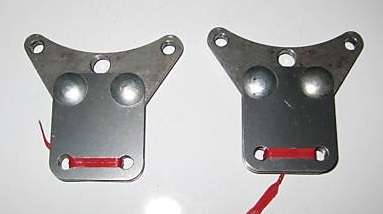
Posted on: 2010/12/29 9:25
|
|||
|
||||

